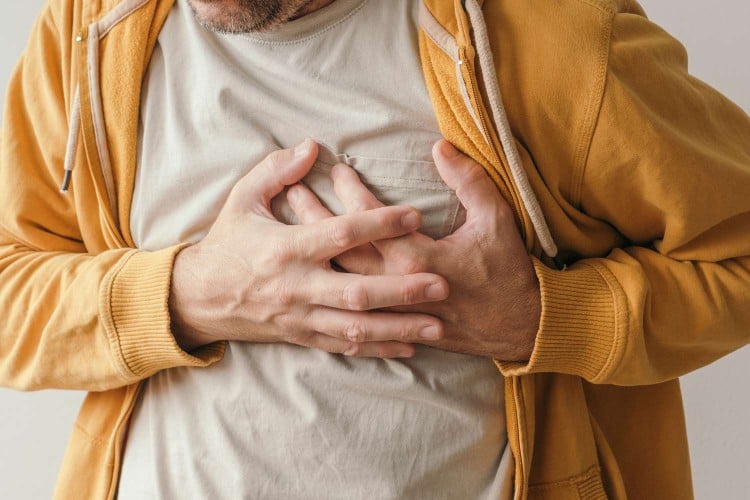Is Paxlovid Still Effective Against New COVID Variants?
- Paxlovid, an antiviral therapy for COVID-19, remains effective in preventing severe illness from some new COVID variants.
- The drug works differently from vaccines and monoclonal antibody treatments by targeting a different part of the virus, called proteases.
- Despite the drug’s effectiveness, uptake remains low in the U.S., partially out of fears for Paxlovid ‘rebound.’
Getty Images/picture alliance
Antiviral treatments, like Paxlovid (nirmatrelvir), seem to still be effective against new strains of COVID-19, experts say.
As new COVID variants have emerged, researchers have updated vaccines and public health strategies to adapt to the new virus strains.
New strains—whether Omicron, Delta, or the more recent EG.5 and BA.2.86—come with slight differences, sometimes evading the fighting powers of certain treatments.
But, as vaccines are updated and monoclonal antibody treatments are made ineffectual, studies continue to show that Paxlovid is still a useful way to fight a COVID-19 infection.
In a study published in JAMA in September of this year, researchers found that Paxlovid and another antiviral called Lagevrio (molnupiravir) were both associated with reductions in hospitalizations and death.
The study authors looked at a cohort of 68,867 patients who were at high risk of developing severe COVID and tested positive at Cleveland Clinic between April 1, 2022 and February 20, 2023.
The research showed that the antiviral medication worked, even as Omicron evolved from BA.2, BA.4, and BA.5 when the data collection started, to the most recent dominant strain, XBB and XBB.1.5.
This new research builds on other studies that have come to similar conclusions—a January 2023 study checked Paxlovid’s efficacy against Omicron between January and July of that year. At that time, Omicron had burst on the scene and was widely circulating in the U.S.
That study found that the roughly 12,500 patients who were given a Paxlovid prescription were 44% less likely to be hospitalized or die from COVID-19 as compared to those who did not take the medication.
Though these studies did not include EG.5, FL.1.5.1, HV.1, and variants expected to take over this fall and winter, experts agree that the drug should still be able to fight these myriad Omicron offshoots.
“All data to date shows the active drug in Paxlovid, nirmatrelvir, remains effective,” Michael Mina, MD, PhD, immunologist and chief science officer of eMed, told Health.
Here’s what experts had to say about why Paxlovid has remained effective over time, and why taking the drug will likely keep at-risk people protected against current and emerging Omicron variants.
Pharmacists Can Now Prescribe Paxlovid, Pfizer's COVID-19 Treatment
Paxlovid’s Power Lies in What It Targets
The mutations we’ve seen in SARS-CoV-2 so far have mostly been in the virus’s spike protein, which is found on the surface of the virus, said Mina. The spike protein allows the virus to enter healthy cells—the first step to infection.
This spike protein is what’s targeted by vaccines—this allows the shot to lower the chance of infection or severe illness from the disease. However, as the virus mutates, that protection becomes less effective.
Paxlovid works differently.
“Paxlovid actually works on a protein that the virus needs to be able to replicate and spread,” Thomas Russo, MD, SUNY distinguished professor of medicine and chief of the division of infectious diseases at the Jacobs School of Medicine at the University at Buffalo, told Health.
That protein—called a protease—has remained mostly unchanged across variants, Mina added.
“Not all of them, but most of the changes we see in the circulating variants are focused on the spike protein,” Russo said.
Since Paxlovid goes after the protease and not the spike protein, it has remained consistently effective.
It is possible that future COVID variants could contain mutations in the proteases, which would hamper Paxlovid’s efficacy, Russo said, but health authorities are keeping an eye on the situation.
A main concern is that frequent use of the antiviral could lead to strains of COVID that are resistant to Paxlovid, similar to how antibiotic use can lead to antibiotic-resistant bacteria. But, so far that doesn’t seem to be the case.
“We haven’t seen any resistant strains that were selected out as a result of treatment with Paxlovid so far,” said Russo. “It is the drug of choice [for] people that are able to take it.”
Paxlovid Rebound: CDC Warns of COVID-19 Symptom Recurrence
Drug Still Not Being Used by All Who Could Benefit
Although Paxlovid remains effective at curbing severe COVID, “the majority of people who could benefit aren’t taking it,” said Scott Dryden-Peterson, MD, medical director of COVID outpatient therapy at Mass General Brigham. He coauthored the January 2023 study on Omicron and Paxlovid.
Part of this is due to misinformation surrounding the drug—primarily due to fear of Paxlovid rebound, or a recurrence in COVID symptoms after a course of the drug has been completed.
This rebound has been documented among people who take antiviral treatment, though according to the National Institutes of Health, the “frequency, mechanism, and clinical implications of these events are unclear.”
It’s also possible for symptoms to come back even if someone isn’t treated with antivirals.
“Rebound happens in both those who do and those who do not take Paxlovid, it’s just more highly recognized in those who take Paxlovid because people are thinking about it,” said Mina.
He explained that Paxlovid isn’t greatly increasing the risk of rebound, and when rebound does occur after Paxlovid, it’s rarely serious.
For those who are at high-risk for severe disease from COVID, there isn’t a reason not to take Paxlovid, and the risk of rebound should not be a deterrent, Dryden-Peterson added.
“Those rebounds are mild, though they are inconvenient,” Dryden-Peterson told Health. “But for the majority of people, it’s worth it because Paxlovid drastically reduces the severity of COVID.”
And in order to get the full benefits of reduced COVID severity, it’s important that cases are caught early, Dryden-Peterson and Russo agreed.
Testing yourself for COVID-19 if you’re feeling sick at all is key. This is especially true now, Russo said, since many XBB and related COVID infections often masquerade as other mild respiratory illnesses at first.
“With these new variants, initially, some people are developing some very mild, almost cold-like symptoms—a little sore throat, a little runny nose, maybe a headache, that sort of thing. You know, it could be COVID,” said Russo. “The sooner you start treatment, the better.”
A fast diagnosis means easier access to a drug that, by all accounts, can still drastically lower the risk of a serious COVID infection.
“The take-home message has not changed,” Russo said. “[Paxlovid is] a very important tool that should still be effective in decreasing the consequences of COVID at this point.”










